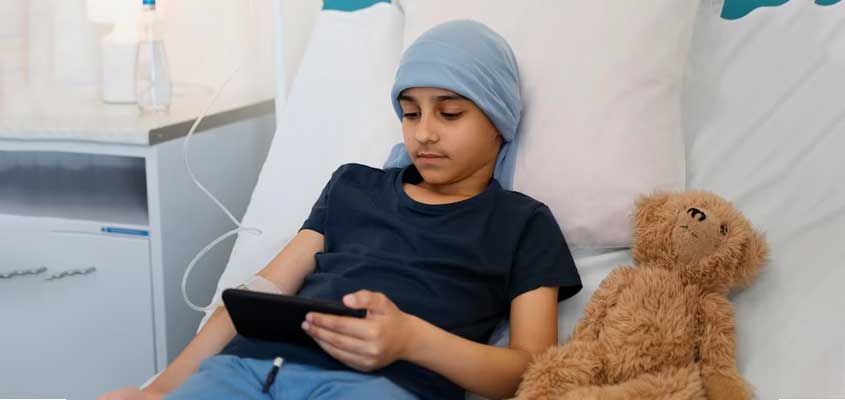By: Dr Silky Jain | Updated: Sep 12, 2023

Blood cancer in children refers to a group of malignancies which originate in the bone marrow, where blood cells are produced. The scientific term used for blood cancer is ‘leukemia’. Leukemia is a cancer of the white blood cells – cells which are responsible for fighting infections. Leukemias in children differ from that in adults. In childhood, most of the leukemias are acute in onset and fast-growing; unlike adults where leukemias are chronic, slow-growing, and may be detected incidentally.
The two main types of childhood leukemias are:
Acute Lymphoblastic Leukemia (ALL): This is the most common type of childhood leukemia, comprising about 80-85% of cases. It arises from lymphoid stem cells, a type of white blood cells precursors in the bone marrow. Fortunately, the survival rate for children with ALL has significantly improved over the years due to advances in the treatment. About 80 – 90 % children with ALL can achieve long-term cure of disease, if it is detected early, and treatment is completed as per advice of pediatric hemato-oncologist.
Acute Myeloid Leukemia (AML): AML is less common than ALL and it originates from myeloid stem cells in the bone marrow.
Symptoms of blood cancer in children can vary but may include unexplained and persistent symptoms such as fever, fatigue, bone pains, bruising, bleeding, swollen lymph nodes, and frequent infections. If any of these symptoms are present, it is essential to consult a pediatrician or hematologist-oncologist for further evaluation.
Diagnosis typically involves blood tests, bone marrow aspiration, and biopsy. Once diagnosed, the treatment plan will depend on the type and risk-stratification of blood cancer, but mainly involves chemotherapy, and sometimes stem cell transplantation.
The good news is that advances in medical research and treatment have significantly improved the prognosis for children with blood cancer over the years. Many children diagnosed with blood cancer can achieve remission and lead long, healthy lives after completing treatment. Supportive care and psychosocial support for both the child and their family are also essential components of comprehensive cancer care.
© Copyright 2024 Dr Silky Jain
Design & Developed By Ezbiz technologies pvt ltd